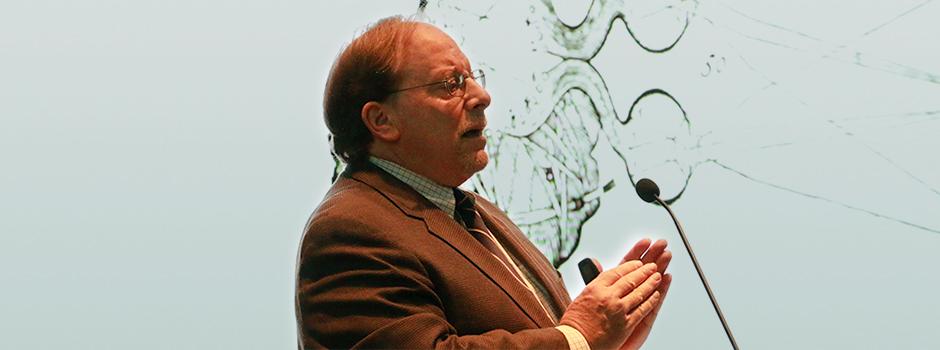Our eyes see many things every day. Yet, we rarely wonder what it means to see? Why do two squares under the same light not look alike against backgrounds of different shades? Or, why do two identical tables appear different when oriented at varying angles? What is the science behind these experiences?
Prof. J. Anthony Movshon, a renowned neuroscientist and Director of NYU’s Center for Neural Science delivered a riveting lecture on November 18 about how vision works to a packed audience at the Shanghai Science & Technology Museum, as part of the Shanghai Science Communication Forum (SSCF) lecture series jointly sponsored by Shanghai Science and Technology Museum, NYU Shanghai and Shanghai Science Education Development Foundation.
The talk by the Member of the National Academy of Sciences and Fellow of American Academy of Arts and Sciences inspired lively questions from an audience of over 200 or so high school students and teachers, undergraduate students, doctors and researchers. One participant said, “Prof. Movshon’s talk was captivating and accessible! He explained the science behind it, and now I better appreciate the links between our perceptions and our past experiences and knowledge.”
With the aim of explaining science and sharing scientific knowledge with the public, the Shanghai Science Communication Forum (SSCF) was initiated by the Shanghai Science and Technology Committee and co-organized by Shanghai Science & Technology Museum, Chinese Academy of Sciences-Shanghai Branch, Shanghai Consulting and Academic Activities Center for Academicians of Chinese Academy of Engineering, and Shanghai Science Education Development Foundation.
“I believe strongly that scientists should communicate with the public not only to showcase their own work, but also to convey the excitement of discovery to people who might be drawn to or might otherwise engage with our work”, said Prof. Movshon.


